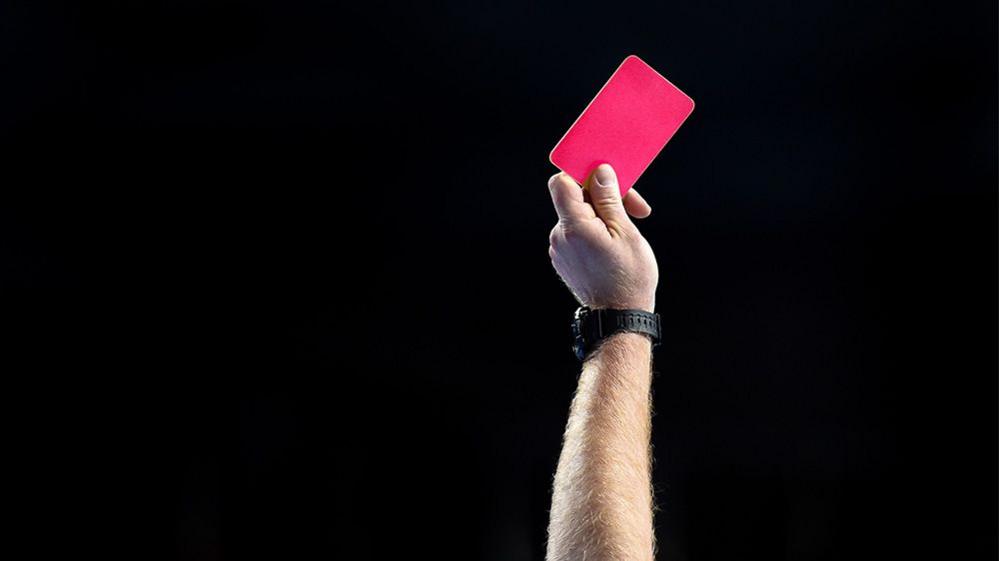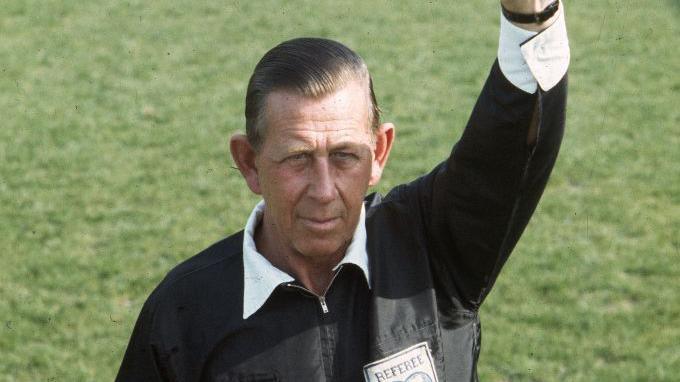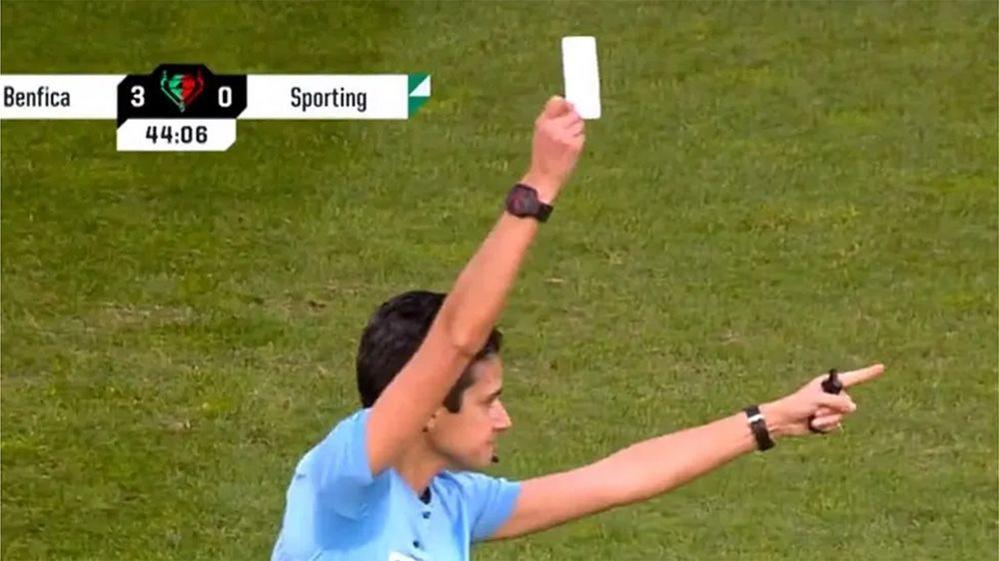Why do we have red and yellow cards in football?

You're off! Ever wondered where red cards come from?
- Published
Referees in the Copa America will be showing players pink cards this summer.
The Copa America is South America's most popular football tournament.
The pink card will be used by referees to show a player needs to be substituted off the pitch due to a head injury.
Have you ever wondered where the classic red and yellow cards come from? Scroll on to find out more.
Sports news this week:
Rangers and Celtic go head-to-head in Scottish Cup Final
- Published24 May 2024
Messi's 'napkin' football contract sells for more than £750,000
- Published20 May 2024
What can we expect from the FA Cup final?
- Published23 May 2024
What is a pink card in football?

The pink card is just being introduced in the Copa America, a South American football tournament.
If a player gets a bad head injury, referees will have to confirm with each other and the head referee that the pink card can be shown.
Once the pink card is raised, the injured player can be substituted off to get medical help. They'll have to go to a head injury assessment to check that everything is okay.
A substitute made by a pink card won't add towards any other substitutes the team does that game. Teams only get a certain amount of substitutes throughout the match, to stop coaches from constantly rotating players throughout a game.
However, the pink card can only be used by a team once during a game.
What do red and yellow cards mean?

Yellow card... Messi was given a warning during the Qatar World Cup in Argentina's game against The Netherlands
A referee's cards can make or break a game for some teams.
A yellow card is a warning to a player, and if they get two yellow cards in a game, they get sent off. The team isn't allowed to send on a substitute.
Players can get a yellow card for certain types of fouls, like purposely fouling to stop a goal, or for time-wasting.
A red card is an instant send-off. These are for serious fouls like dangerous tackles, or purposefully being violent to another player.
Players can also get a red card for spitting at players or match officials.
Where did they come from?

Ken Aston introduced the world cup to red and yellow cards in the 1970s
The system of yellow and red cards was officially introduced to the Fifa World Cup in 1970.
Before this, players were sent off or given warnings, but without something visual like a card to show viewers what was going on.
A referee called Ken Aston campaigned for the colour-coded system during matches.
He said it would help people who speak different languages to wherever the match was being played to understand what was going on.
What are the other cards that referees use?

Portugal introduced the card to try "improve ethical value in the sport"
Earlier this year, during a football game in Portugal, the referee showed a white card. This card was introduced to celebrate good sportsmanship during a match.
During this game, it was used to celebrate medical staff from both teams rushing to help someone who had become ill in the stands.
A green card has also been used in games before. This happened in a Confederation of Independent Football Associations (Conifa) match, during a world cup for non-Fifa affiliated teams.
Conifa said the card tells a player to leave the game immediately, and they can be replaced if the team haven't used up all their substitutes.
They said the green card was introduced to reduce anger at referees during matches, as it gave players a second chance if they make a mistake.
